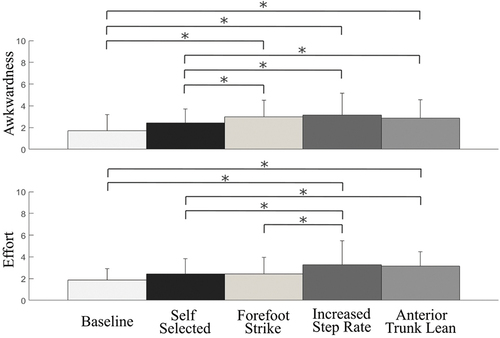Figures & data
Figure 1. (Left) Typical subject running on the treadmill while receiving real-time visual biofeedback of the vertical impact peak. (Right) Vertical impact peak is displayed for the current step and the previous nine steps in the real-time stairstep plot, which is updated on each step. Participants performed self-selected running gait modifications to decrease the vertical impact peak value displayed on the monitor.

Table 1. Gait modifications, impact loading, perceived awkwardness and perceived effort for baseline, self-selected and specifically trained gait modifications across all participants.
Figure 2. Impact loading for baseline, self-selected gait modifications and specficially trained gait modifications. Bars indicate one standard deviation. Asterisks represent significant difference (p < 0.05).

Figure 3. Perceived awkwardness and effort for baseline, self-selected gait modifications and specifically trained forefoot strike pattern, increased step rate and anterior trunk lean gait modifications. Bars indicate one standard deviation. Asterisks represent significant difference (p < 0.05).

Table 2. Individual self-selected gait modifications by participant.
